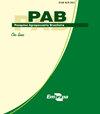农牧一体化系统中常规和免耕栽培木薯产量
IF 0.7
4区 农林科学
Q3 AGRICULTURE, MULTIDISCIPLINARY
引用次数: 0
摘要
摘要本研究旨在评价免耕和常规栽培下,与围栏草(Urochloa brizantha)轮作的木薯(Manihot esculenta)作物产量、土壤密度和碳含量。木薯处理如下:常规耕作,放牧2年(CC-2P)和4年(CC-4P);2年(NTC-2P)和4年(NTC-4P)放牧后免耕;和多年生牧草(PP)的栅栏草。在2016/2017作物年,CC-2P处理的木薯产量(63.29 Mg ha-1)高于NTC-2P处理(47.85 Mg ha-1)。然而,在2018/2019作物年度,CC-4P (60.95 Mg ha-1)和NTC-4P (60.68 Mg ha-1)的产量差异不显著。2012 - 2019年,CC-2P处理土壤碳含量(0-10 cm)下降。2019年,NTC-4P的碳储量高于CC-4P和CC-2P,从2012年的16.41 Mg ha-1增加到2019年的21.46 Mg ha-1。木薯产量因作物年份而异,而土壤碳含量在CC-2P后下降,而在NTC-4P后增加。本文章由计算机程序翻译,如有差异,请以英文原文为准。
Cassava yield in conventional and no-tillage cultivation in integrated crop-livestock systems
Abstract The objective of this work was to evaluate cassava (Manihot esculenta) crop yield, as well as soil density and carbon content, under no tillage and conventional cultivation, in rotation with palisade grass (Urochloa brizantha) subjected to grazing. Treatments consisted of cassava cultivated as follows: in conventional tillage after 2 (CC-2P) and 4 (CC-4P) years of pasture; in no-tillage after 2 (NTC-2P) and 4 (NTC-4P) years of pasture; and with perennial pasture (PP) of palisade grass. The CC-2P treatment showed higher cassava yield in the 2016/2017 crop year (63.29 Mg ha-1) than NTC-2P (47.85 Mg ha-1). However, in the 2018/2019 crop year, no significant yield differences were observed between CC-4P (60.95 Mg ha-1) and NTC-4P (60.68 Mg ha-1). Between 2012 and 2019, soil carbon content (0-10 cm) decreased in the CC-2P treatment. In 2019, carbon stock was higher for NTC-4P compared with CC-4P and CC-2P, increasing from 16.41 to 21.46 Mg ha-1 between 2012 and 2019. Cassava yield varies depending on crop year, whereas soil carbon content decreases after CC-2P, but increases after NTC-4P.
求助全文
通过发布文献求助,成功后即可免费获取论文全文。
去求助
来源期刊

Pesquisa Agropecuaria Brasileira
农林科学-农业综合
CiteScore
1.20
自引率
0.00%
发文量
45
审稿时长
9-18 weeks
期刊介绍:
Pesquisa Agropecuária Brasileira – PAB – is issued monthly by Empresa Brasileira de Pesquisa Agropecuária – EMBRAPA, affiliated to Ministry of Agriculture, Livestock and Food Supply. PAB publishes original scientific-technological articles on Plant Physiology, Plant Pathology, Crop Science, Genetics, Soil Science, Food Technology and Animal Science.
Its abbreviated title is Pesq. agropec. bras., and it should be used in bibliographies, footnotes, references and bibliographic strips.
 求助内容:
求助内容: 应助结果提醒方式:
应助结果提醒方式:


